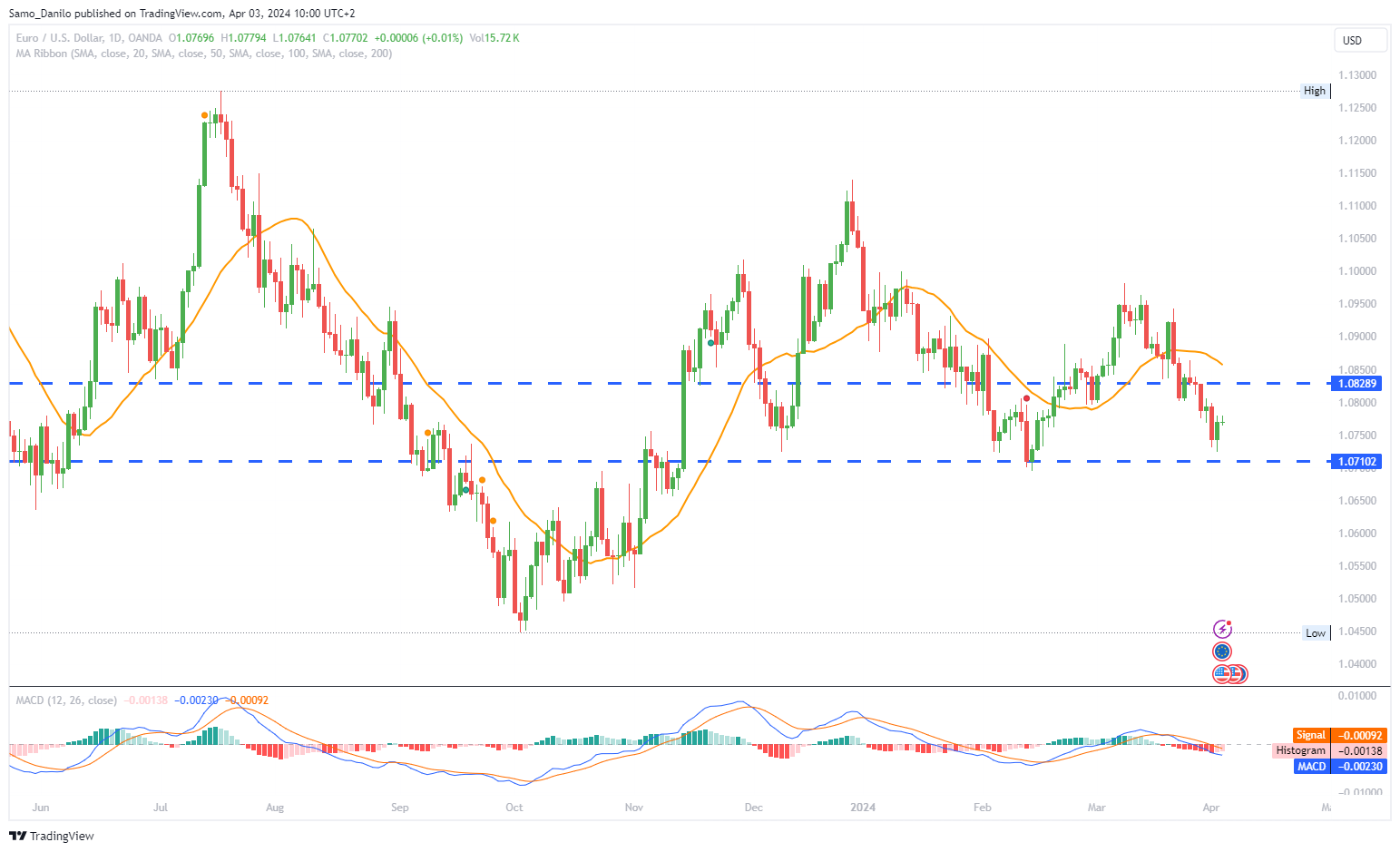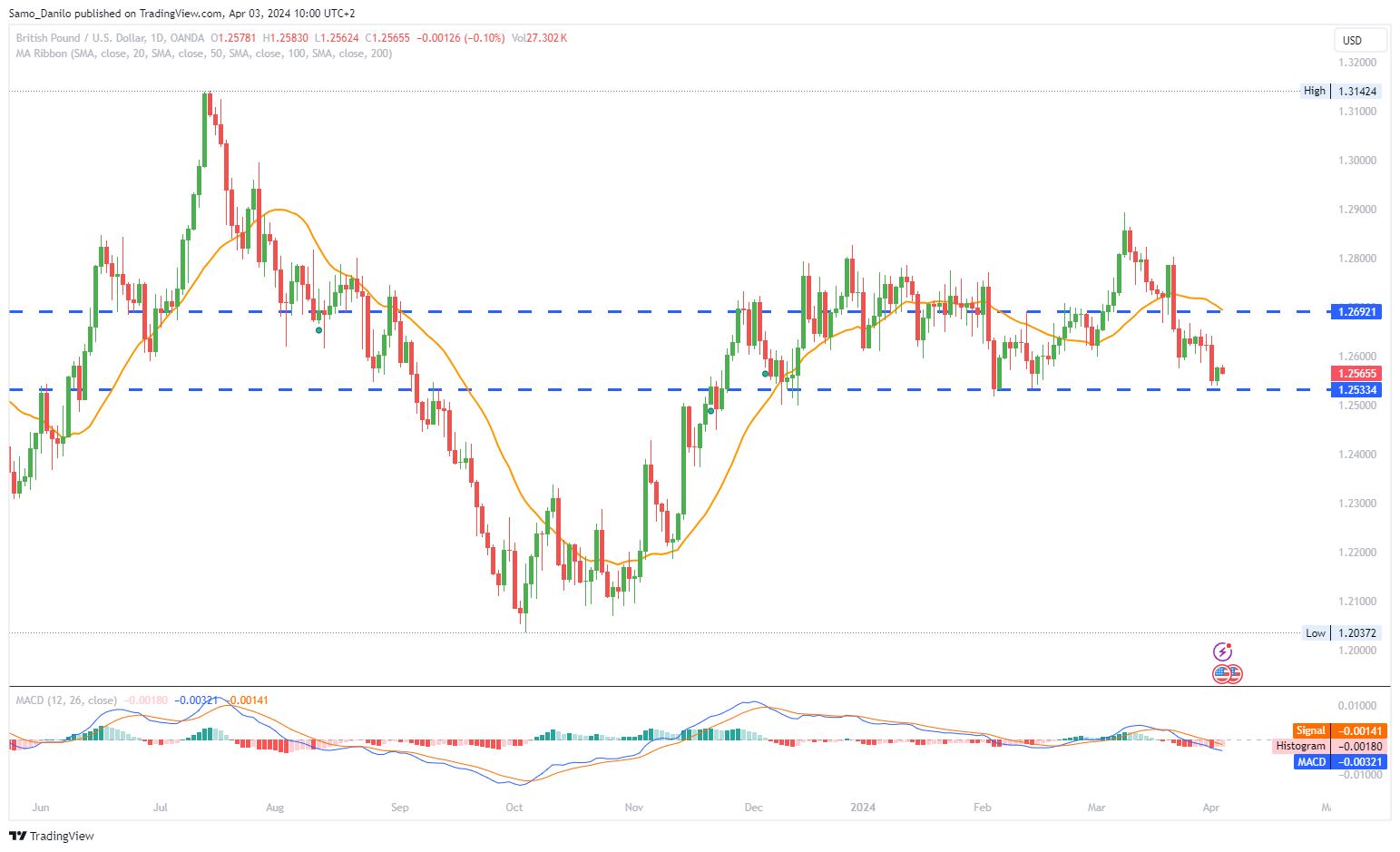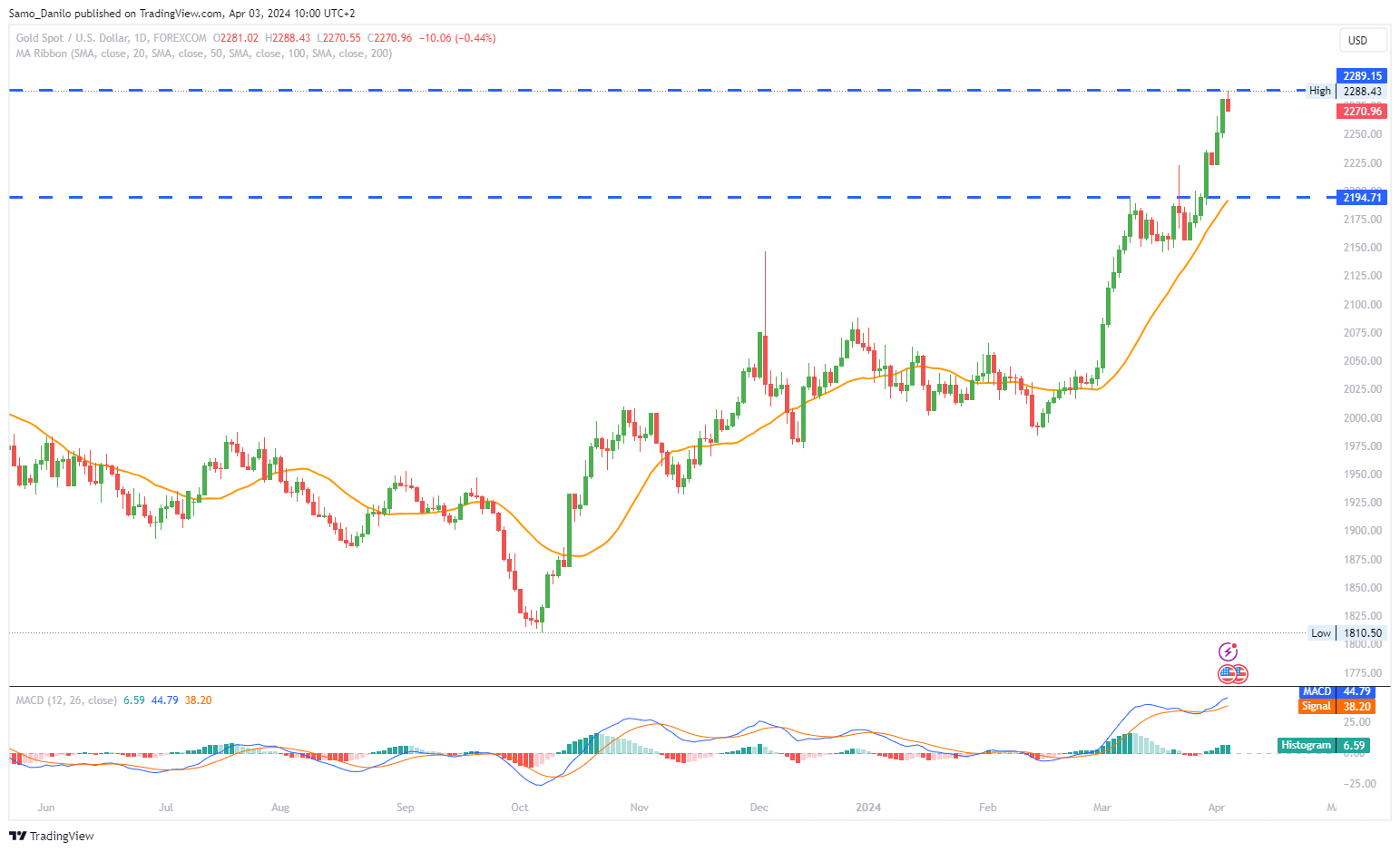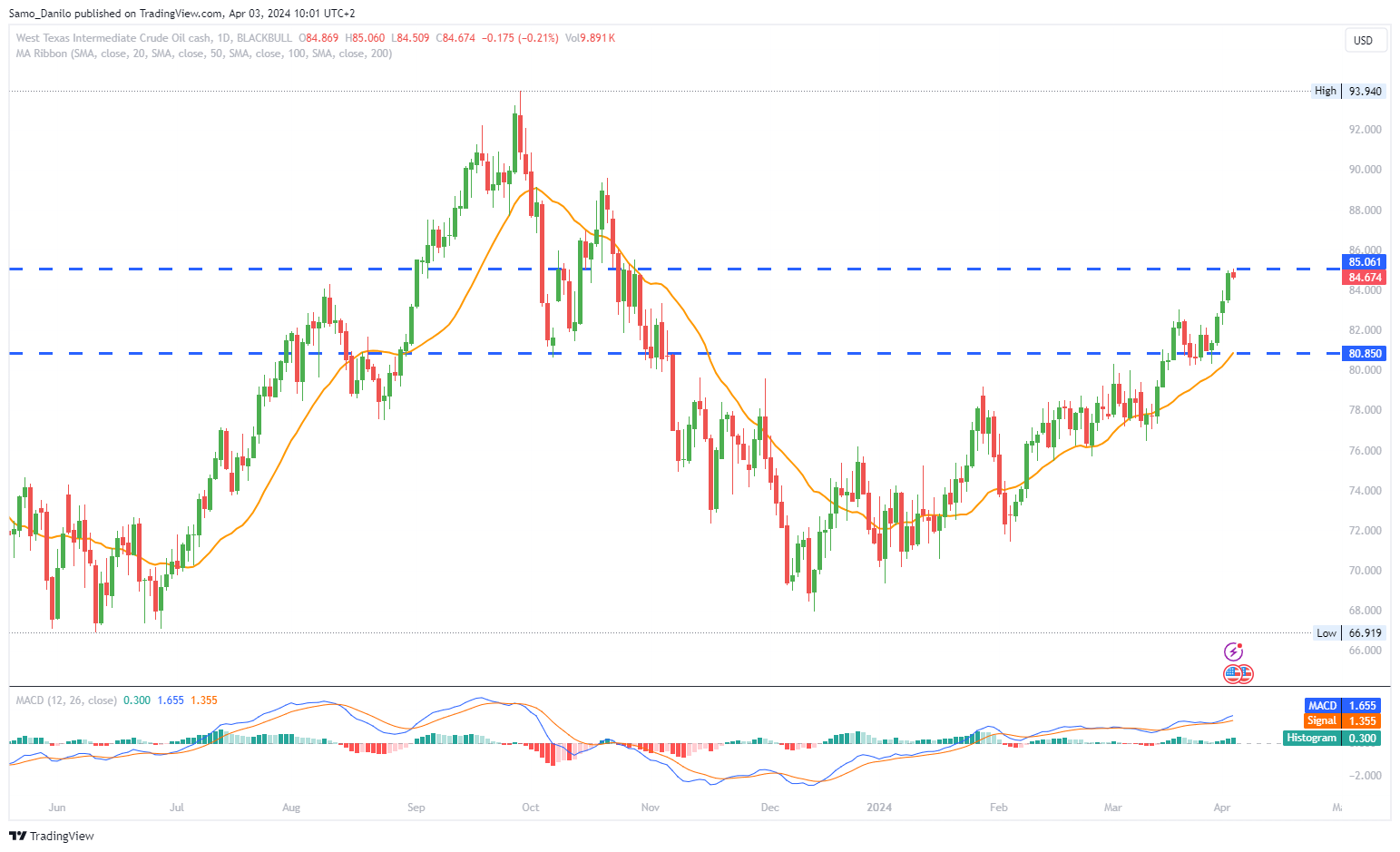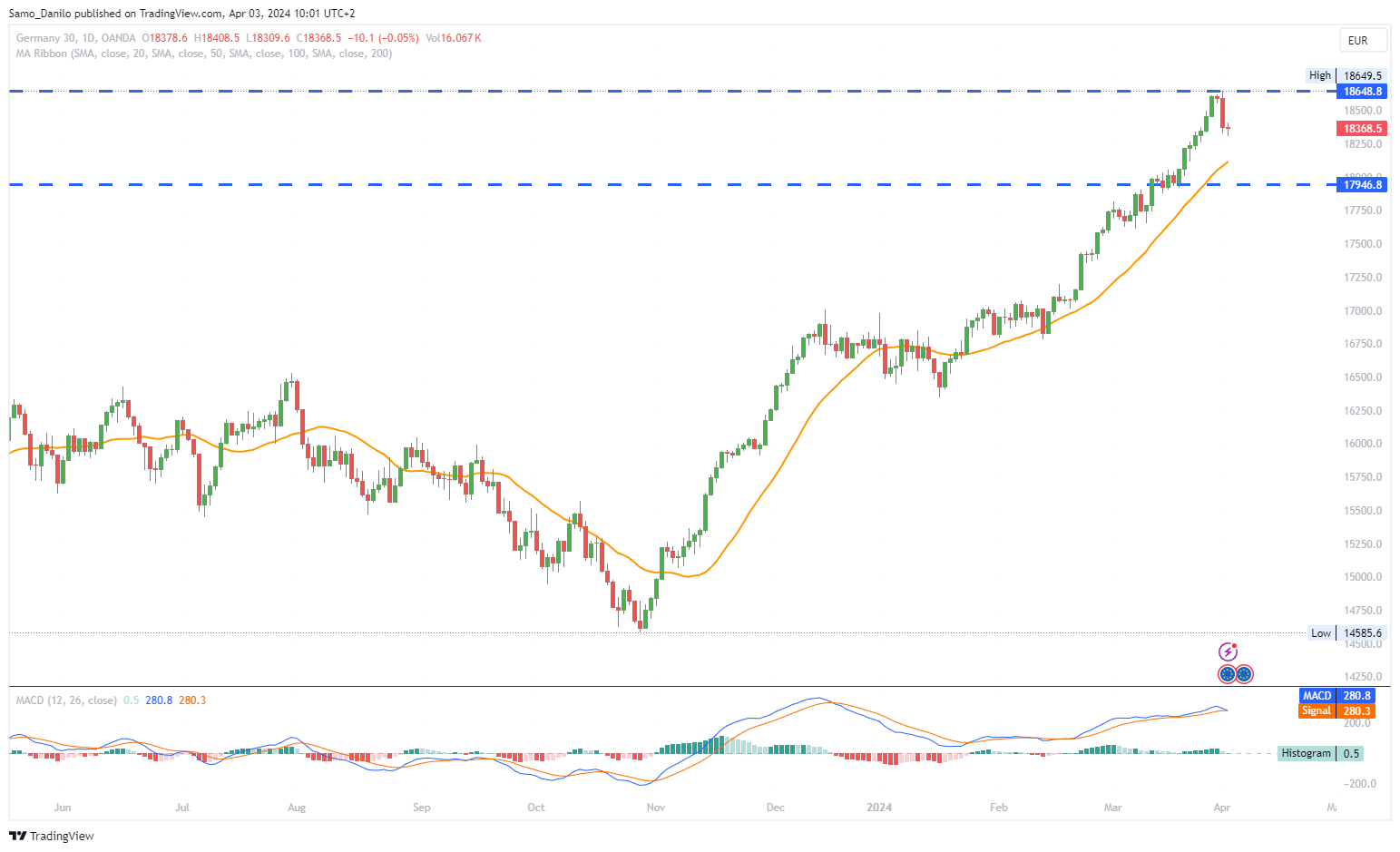EURUSD
- The EUR/USD pair is maintaining its range below 1.0800 early Wednesday, reflecting a stable US Dollar and mixed market sentiment.
- Market focus shifts to the release of the Harmonized Index of Consumer Prices (HICP) for the Eurozone on Wednesday, April 3, providing insights into inflation trends.
- ECB President Christine Lagarde's recent comments highlighted uncertainty regarding the nature of current price pressures, emphasizing the challenge of distinguishing between temporary factors and persistent inflationary trends.
- ECB policymaker Robert Holzmann expressed openness to a potential rate cut in June but emphasized the need for more supportive economic data before making a decision.
- Cleveland Fed President L. Mester's remarks on Tuesday suggesting the possibility of future interest rate cuts by the Fed add to market speculation and influence sentiment surrounding the EUR/USD pair.
Closing statement: The EUR/USD pair navigates below 1.0800 amid a stabilizing US Dollar and mixed market sentiment. Attention turns to the release of the Harmonized Index of Consumer Prices (HICP) for the Eurozone, providing insights into inflationary trends. ECB President Christine Lagarde's remarks underscore uncertainty surrounding current price pressures, while ECB policymaker Robert Holzmann's openness to a potential rate cut in June awaits more supportive economic data. Meanwhile, remarks from Cleveland Fed President L. Mester regarding future interest rate cuts by the Fed contribute to market speculation and impact sentiment surrounding the EUR/USD pair.
GBPUSD
- GBP/USD struggles to find momentum around 1.2550 in European trading on Wednesday, reflecting a lack of clear direction.
- The US Bureau of Labor Statistics reports an increase in job openings to 8.756 million in February, slightly surpassing expectations, while layoffs and the quitting rate also show modest changes.
- Cleveland Fed President Loretta Mester anticipates potential rate cuts later in the year but does not foresee immediate action at the upcoming Fed meeting.
- S&P Global's PMI for UK manufacturing rose from 47.5 to 50.3 in March, marking the first month of expansion in twenty, driven by recovering demand.
- Looking ahead, the UK economic calendar includes the S&P Global Services PMI, while US traders focus on Fed speeches, along with the ADP Employment Change report and the ISM Services PMI.
| SMA (20) | Slightly Falling |
| |
| RSI (14) | Falling |
|
|
| MACD (12, 26, 9) | Falling |
|
|
Closing statement: GBP/USD struggles for direction around 1.2550 amid mixed economic signals. While the US sees an increase in job openings, modest changes in layoffs, and a positive shift in UK manufacturing activity, uncertainty persists regarding future Fed actions. Cleveland Fed President Loretta Mester anticipates potential rate cuts later in the year, while upcoming economic data and Fed speeches remain pivotal for market sentiment surrounding GBP/USD.
GOLD
- Gold price remains near a new record high of $2,288 reached during Wednesday's early Asian session, signaling ongoing investor interest in safe-haven assets.
- Geopolitical tensions in the Middle East and between Ukraine and Russia continue to bolster gold prices as investors seek refuge from uncertainty.
- Market sentiment is further dampened by the aftermath of a 7.7 magnitude earthquake in Taiwan, leading to collapsed buildings and Tsunami alerts, contributing to risk aversion.
- Overnight selloffs in Wall Street stocks, fueled by fading expectations of a June Fed rate cut and robust US jobs data, further reinforce investor caution and support for gold.
- San Francisco Fed President Mary Daly suggests that three rate reductions this year could be a "very reasonable baseline," emphasizing the uncertain economic landscape.
| SMA (20) | Rising |
|
|
| RSI (14) | Rising |
|
|
| MACD (12, 26, 9) | Rising |
|
|
Closing statement: Gold price nears a new record high amid ongoing geopolitical tensions, risk aversion sparked by natural disasters, and market concerns over Fed rate policy. The aftermath of a devastating earthquake in Taiwan and overnight selloffs in US stocks add to investor caution, reinforcing support for safe-haven assets like gold. San Francisco Fed President Mary Daly's remarks on potential rate reductions further underscore market uncertainty, fuelling demand for gold as a hedge against economic volatility.
CRUDE OIL
- Western Texas Intermediate (WTI), the US crude oil benchmark, trades around $85.30, its highest level since October 2023, signaling ongoing bullish sentiment in the market.
- Geopolitical tensions in the Middle East and Russia-Ukraine escalate, including the Israeli airstrike on an Iranian embassy in Syria, Ukrainian attacks on Russian refineries, and Houthi attacks on shipping in the Red Sea, heightening concerns over supply disruptions and driving WTI prices higher.
- Oil traders await outcomes from the Joint OPEC/non-OPEC Ministerial Monitoring Committee (JMMC) meeting, with expectations for an extension of voluntary production cuts for the second quarter.
- US crude oil inventories for the week ending March 29 decline by 2.286 million barrels, reversing the previous week's significant jump, according to the American Petroleum Institute (API) report on Tuesday, supporting bullish sentiment.
- Market participants focus on Fedspeak, as Fed officials including Bowman, Goolsbee, Barr, Kugler, and Powell are scheduled to deliver speeches, with their remarks likely to influence oil market dynamics and investor sentiment.
| SMA (20) | Rising |
|
|
| RSI (14) | Rising |
|
|
| MACD (12, 26, 9) | Rising |
|
|
Closing statement: Crude oil prices surge to their highest level since October 2023 amid escalating geopolitical tensions in the Middle East and Russia-Ukraine conflict, underscoring concerns of potential supply disruptions. Anticipation builds ahead of the OPEC+ meeting for an extension of voluntary production cuts, while a decline in US crude inventories provides additional support to bullish sentiment. Market attention remains on Fedspeak, with remarks from Fed officials expected to impact oil market dynamics and investor sentiment throughout the day.
DAX
- The German Manufacturing PMI declines from 42.5 to 41.9 in March, reflecting weakening buyer demand for DAX-listed stocks at the close of the first quarter, in line with downward revisions to German growth forecasts.
- German inflation data indicates a softer annual inflation rate, falling from 2.5% to 2.2% in March, supporting investor expectations for a potential ECB rate cut in June, particularly fueled by declining energy prices.
- Eurozone inflation figures for March, expected to show a decrease in the annual core inflation rate from 3.1% to 3.0%, could further influence speculation regarding a June ECB rate cut.
- Eurozone unemployment statistics will be released alongside inflation figures, although they are likely to receive less attention from investors.
- Attention shifts to the US labor market, with ADP employment figures for March scheduled for release on Wednesday, presenting another focal point for investors amid ongoing economic data releases.
| SMA (20) | Rising |
|
|
| RSI (14) | Slightly Rising |
| |
| MACD (12, 26, 9) | Rising |
|
|
Closing statement: Weakness in the German manufacturing sector, highlighted by a decline in the PMI, dampens buyer demand for DAX-listed stocks, reflecting concerns over economic growth prospects. Softening inflation rates in Germany and the Eurozone fuel speculation of a potential ECB rate cut in June, further influencing market sentiment. Investors await additional economic data, including Eurozone inflation figures and US employment data, for further insights into the global economic landscape and potential market movements.
